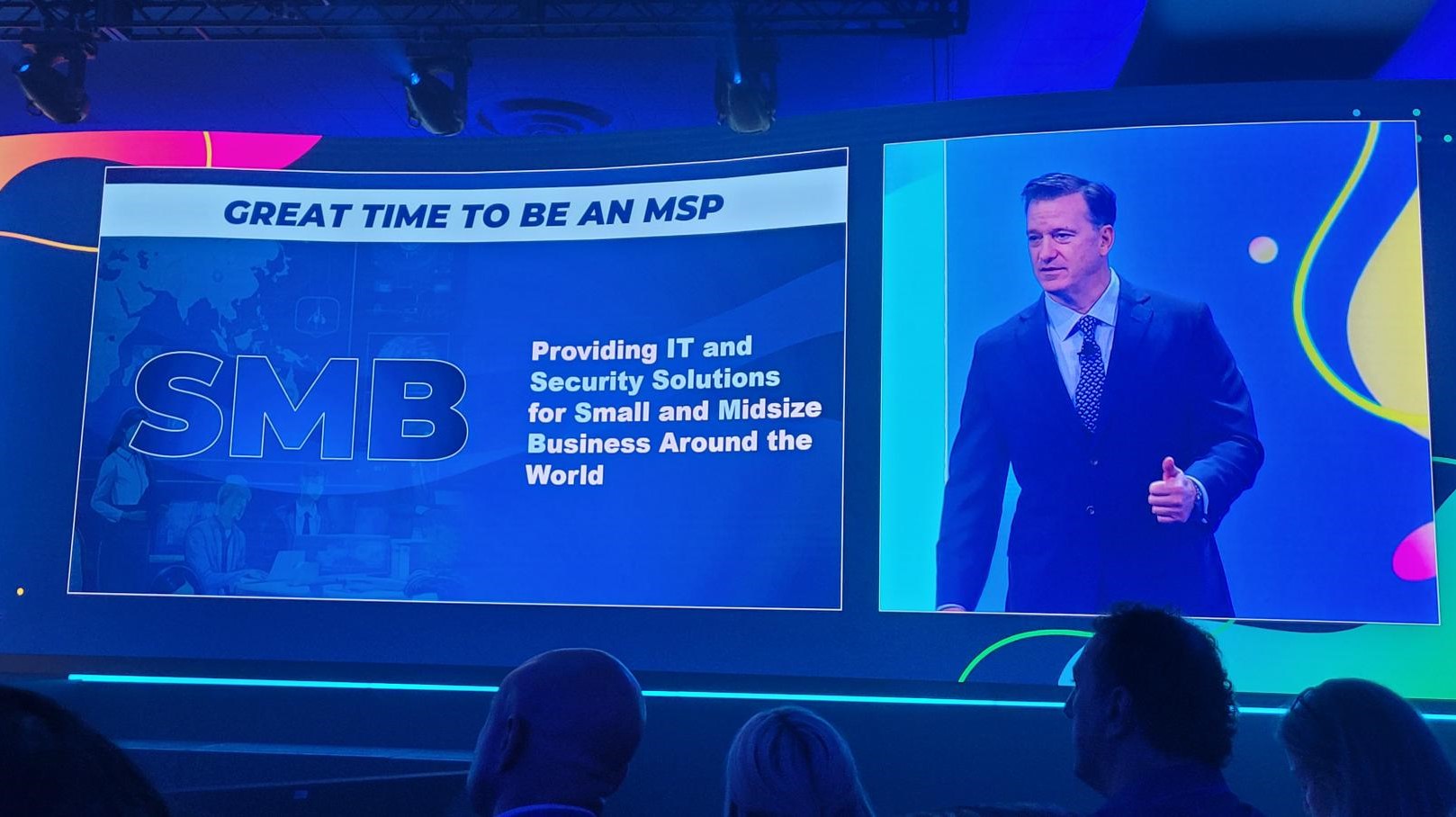Unified Communications: A New Frontier for SMBs
Unified communications (UC), the merger of phone and desktop technologies, is filtering down to SMBs, bringing with it efficiencies and cost savings.
By Carolyn Heinze
There’s no doubt about it: The proliferation of a vast array of communications technologies has enabled businesspeople to be anywhere, anytime, and remain connected. While this has undeniably boosted response, efficiency, and productivity, it has also presented a unique set of challenges, such as how to direct and organize incoming calls and messages from a variety of sources.
The answer, over the last couple of years, has been unified communications (UC): solutions that combine email, voice mail, instant messaging, and Web conferencing into one integrated package.
“The main benefit is that it unties you from your desk so that you can work effectively from pretty much wherever you are, and you have all of your communications well organized,” says Sara Radicati, president and CEO of The Radicati Group Inc., a research firm that covers unified communications. “Whatever message needs to reach you from whatever channel–be it voice, mail, or other types of communication–you find everything consolidated and easy to access.” This is important for all businesses, she concedes, but at the SMB level it’s a valuable solution for people who are, more often than not, juggling several roles within the organization.
SMBs must also be in front of their clients, which can incur significant travel expenses. With Web conferencing being folded in to UC, SMBs stand to gain considerable savings in this area.
“That benefits not only travel, but also people who are working remotely from home. The cost of gas has come down a little bit, but people traveling all the time is costly–especially if they don’t need to,” says Sanjeev Aggarwal, a partner at research and consulting firm Hurwitz & Associates. “It also makes people more available. If I’m not traveling from Boston to California for two days, I can do lots of Web conferencing.”
Aggarwal notes that videoconference pricing has come down, making solutions from vendors such as Polycom Inc. of Pleasanton, Calif., and New York-based Tandberg reasonable options for SMBs.
STILL EMERGING AT SMBs
While UC has become increasingly common in enterprise IT, it has been slower to emerge in the SMB market. “It’s still in the really early stages of market adoption, whether it be premise-based products or services from different vendors,” says Mark Cortner, senior analyst at Burton Group.
This is changing, however. Affordable high-speed Internet connectivity along with the introduction of cost-effective SaaS offerings are making it possible for more modest organizations to obtain the UC functionality traditionally enjoyed by large enterprises.
Cortner argues that the flexibility UC offers may actually be more appreciated at the SMB level. “When you are talking about the SMB market, a lot of times that flexibility can be the difference between getting a piece of business or not–business that might have typically gone to a larger vendor,” he says.
It also simplifies operations on the back end, enabling companies that don’t have the luxury of an internal IT department to manage their communications effectively. Says Cortner: “A larger enterprise usually has IT personnel who are able to manage, operate, and administer all of these varieties of communications and applications, whereas in an SMB the IT department may be very limited, or it may not exist at all.”
Over the last year or so, a number of on-premise solutions developers have introduced cloud- or SaaS-based UC–services that are accessible via the network that eliminate the need for hardware to be installed at the company’s actual place of business. These products–such as Microsoft’s Business Productivity Online Standard Suite (BPOS), IBM’s LotusLive, and Cisco’s WebEx Connect–offer UC as a service, which not only alleviates the need for premise-based infrastructure such as servers and PBXs, but also provides an easier way to extend UC outside of the SMB.
Take, for example, a scenario in which an SMB is working on a contract with a larger enterprise. “That larger business is unlikely to expose its UC environment to that SMB, and that could be some hindrance in terms of [the SMB’s] ability to more effectively communicate and collaborate,” Cortner says. “When you bring in online or live services, rather than having to gain access into the larger business’s environment, you can both be in this online space and those spaces can be secured.” This helps to make smaller companies more attractive candidates for large organizations seeking subcontractors.
While cloud-based UC can be viewed as a potential threat to channel partners that are already selling premise-based solutions, there is a significant opportunity for resellers to position themselves in the delivery of UC as a service.
“It can enable these enterprises to resell those services and get commissions off the volume that they sell,” says Cortner. “It also offers them the opportunity to provide some sort of managed service associated with it.” After all, there will always be some infrastructure and support required on-site that lends itself to recurring revenues.
FOCUS ON THE CLIENT’S BUSINESS
When presenting different UC solutions to their SMB customers, channel partners should focus on the business benefits the technology offers, rather than on the details of the technology itself.
“There is a general approach by many in the industry, across all segments, to focus on the technology and the differentiation of one vendor’s implementation of it vs. another,” says Cortner. “And while that certainly can provide some separation between vendors, the comparison tends to turn the SMB customer off. They are probably less familiar with the technology, and they probably care even less about it because they don’t have technology champions in the organization that you might see in a larger enterprise.”
What smaller business owners want to know is how the technology will improve their operations: What business problem will it solve? How will it contribute to the bottom line? Can they take advantage of these different applications while limiting the capital investment they need to make up front? What is the fee structure per employee? And, on a practical level, can they really access these applications anytime, from anywhere?
“Resellers need to understand what the problem is that they are trying to solve for their customer base,” says Brian Riggs, research director, enterprise software and communications, at Current Analysis, a firm that provides competitive market intelligence.
UC is not a product in a box, says Riggs, but a tool that is used to fix a communications problem: “If, for example, a particular customer has a very large distributed workforce, the reseller can present them with a UC tool that can streamline communications among that distributed workforce–that is the tool that needs to be used to fix a problem at that particular SMB. It depends on how sophisticated the UC needs of that SMB really are.”
Henry Dewing, principal analyst at Forrester Research Inc., notes that mobility is extremely important for SMBs as well, which makes unified communications a logical option. “They are out working with their customers more often than not,” he says, and they don’t want to lose touch with what’s happening back at the office. “Being able to put that unified communications client onto a smartphone cellular device or being able to take that interface with them on their laptop when they plug in at Starbucks or some other Wi-Fi hot spot is particularly important. They can have the same capability as they would in their office.”
So what approach might you take to educate a customer who has shown keen interest in the technology itself? “Maybe you could leave a nice white paper behind,” says Cortner. “But the SMB is going to be much more attuned to the presentation of business benefits and the flexibility that it enables as opposed to the underlying technology.”
UNDERSTAND THE TECHNOLOGY
On a technical level, Radicati advises that channel partners thoroughly investigate the claims that UC vendors make to get a clear understanding of how solutions will work once they have deployed them at a customer’s site. “The issue with UC is that it touches many different aspects of communication,” she says. “It’s important for the reseller to have access to at least one or two accounts where they have put everything together, where they can see how it really works and understand what the pitfalls might be.” This way, channel partners can provide a realistic picture of how the solution will operate before they run into problems.
One of the mistakes Radicati has witnessed with UC deployments is related to Internet connectivity: “Solution providers will bring in fantastic new voice capabilities, but the underlying Internet connectivity is very poor, so nothing works,” she says. “If they had had the opportunity to see UC in a few working environments, they would find it easier to avoid this kind of situation.”
Ultimately, however, SMB owners want to know how UC will affect their daily lives. The smaller the business, says Dewing, the more likely it is that the person buying the solution is the one who is going to be using it. “He’s also the guy who is either going to make or not make money at the end of the day, and wants common-sense answers to practical questions,” notes Dewing. “Why does this make sense for my business? Show me how it’s going to make me more efficient so I can move on.”
Aggarwal emphasizes that even in this economy, when businesses are reticent to invest in new systems, channel partners can speed up the sales process by demonstrating the efficiency-related benefits and cost savings associated with UC solutions.
“The effort has to be made in a way that resonates with SMBs,” he says. “What are they thinking of in the current environment? They’re thinking of cutting costs and reducing capital expenditures. If you can show them how the cost savings can be used to pay for these solutions–the short-term ROI–you can get these SMBs to take action faster.”
CAROLYN HEINZE is a freelance technology and business writer and editor.














